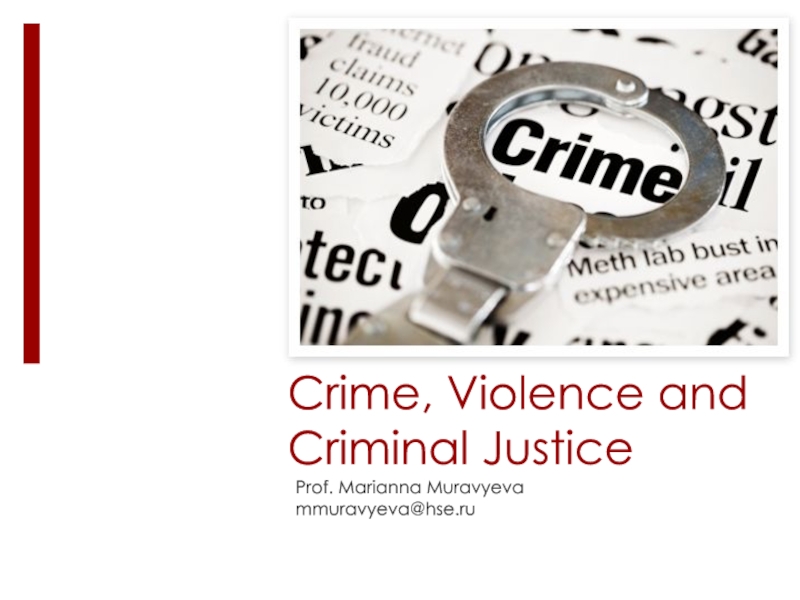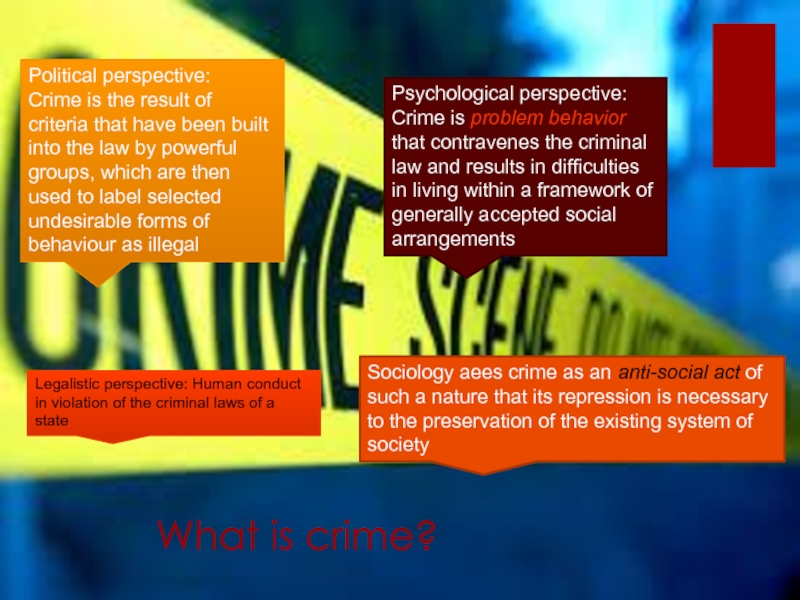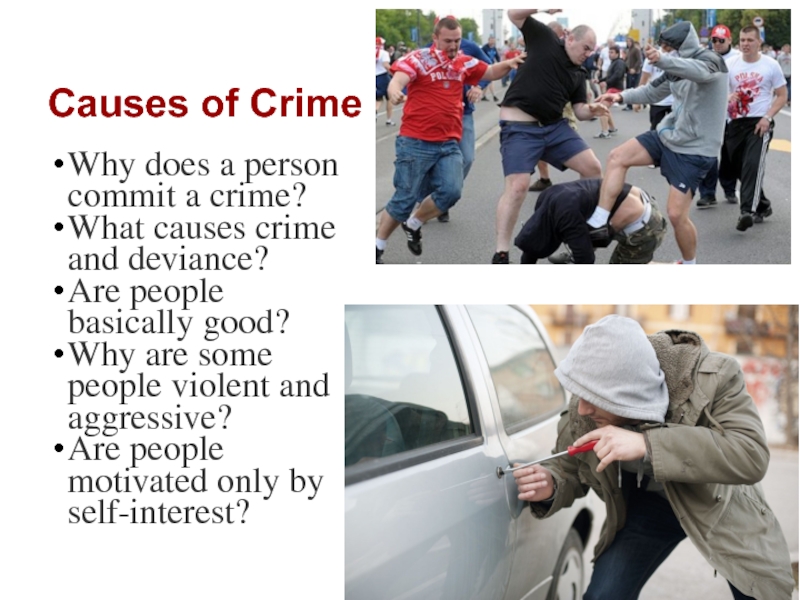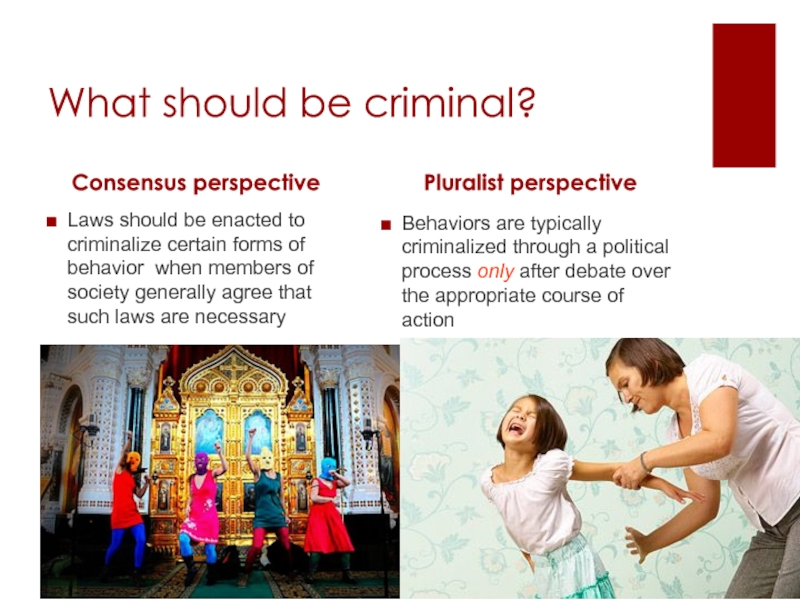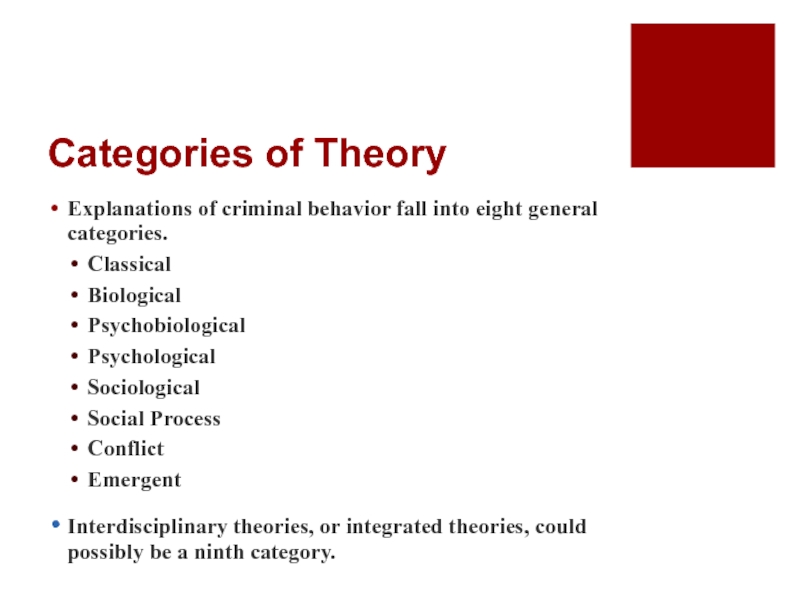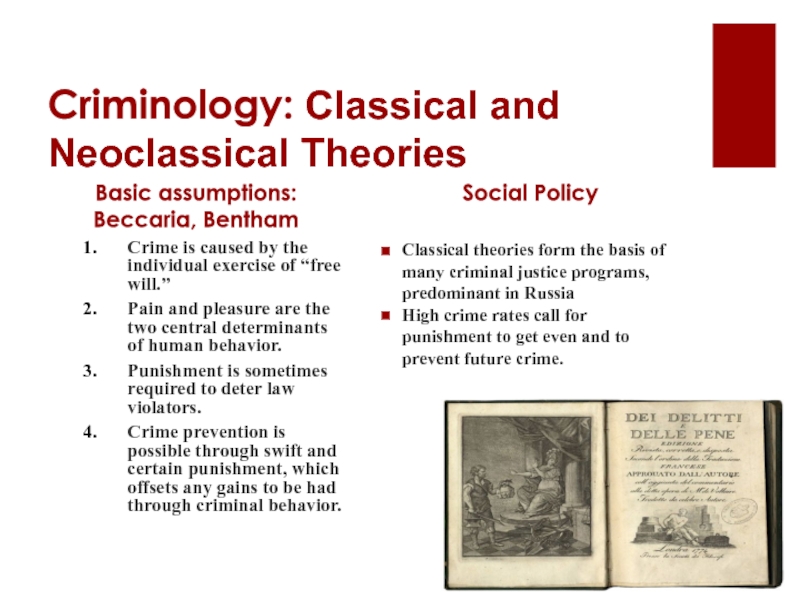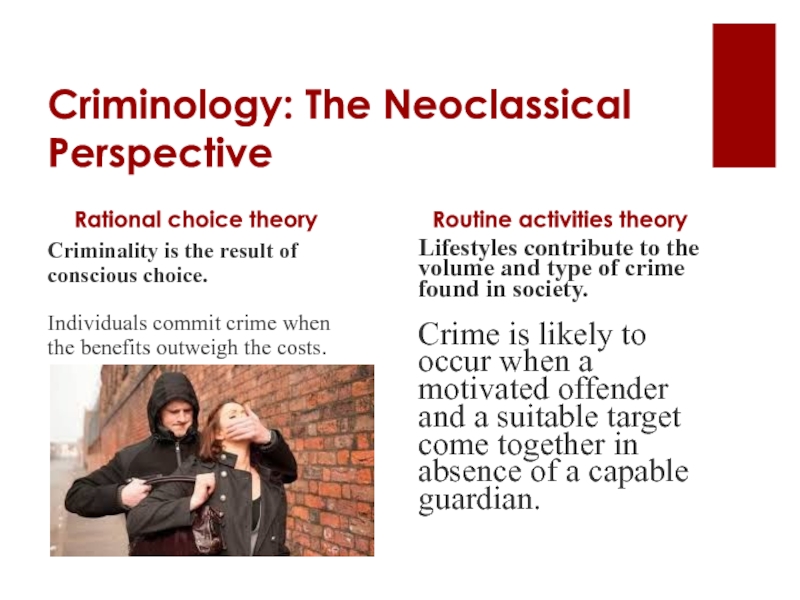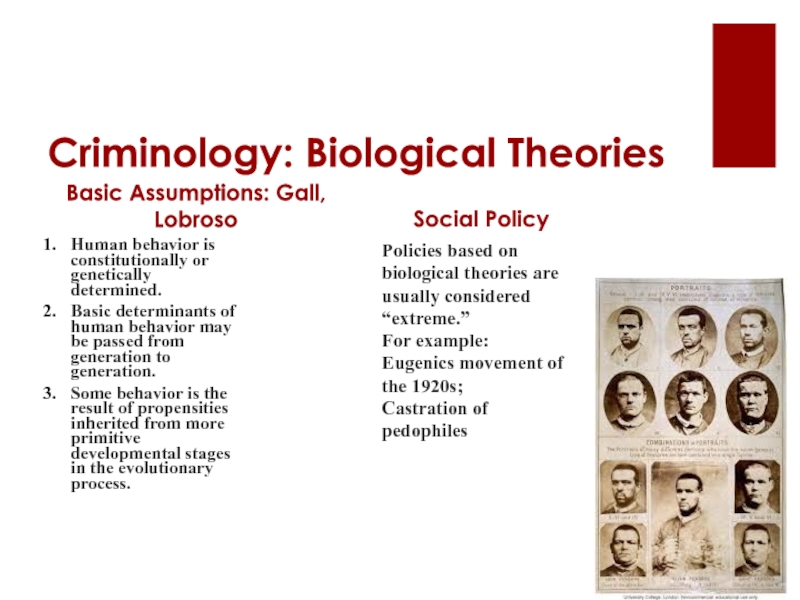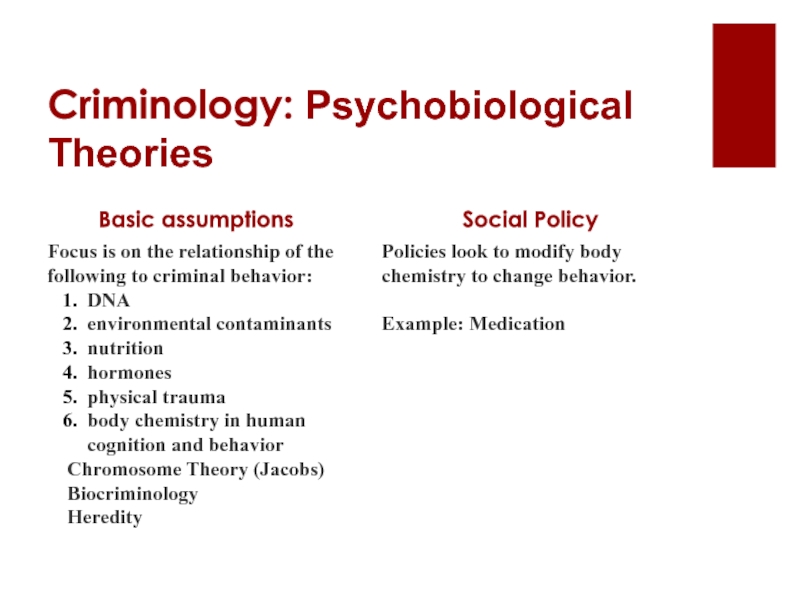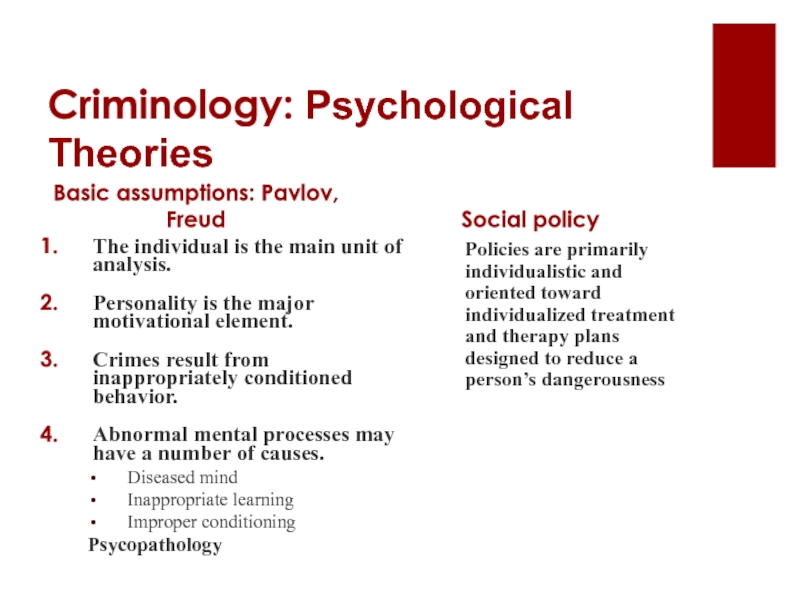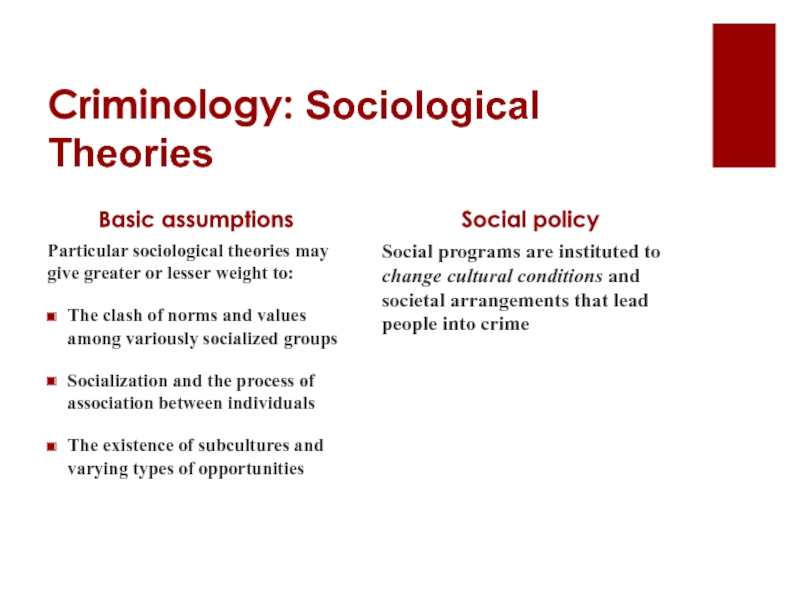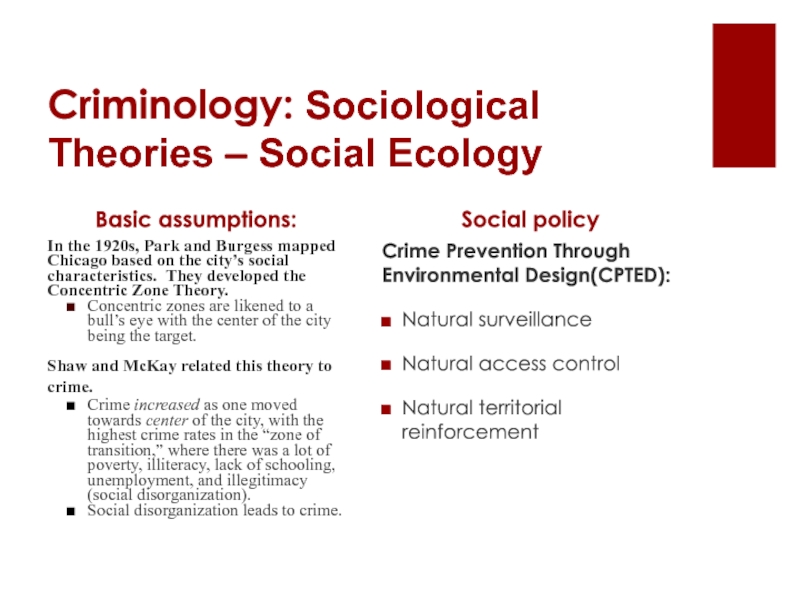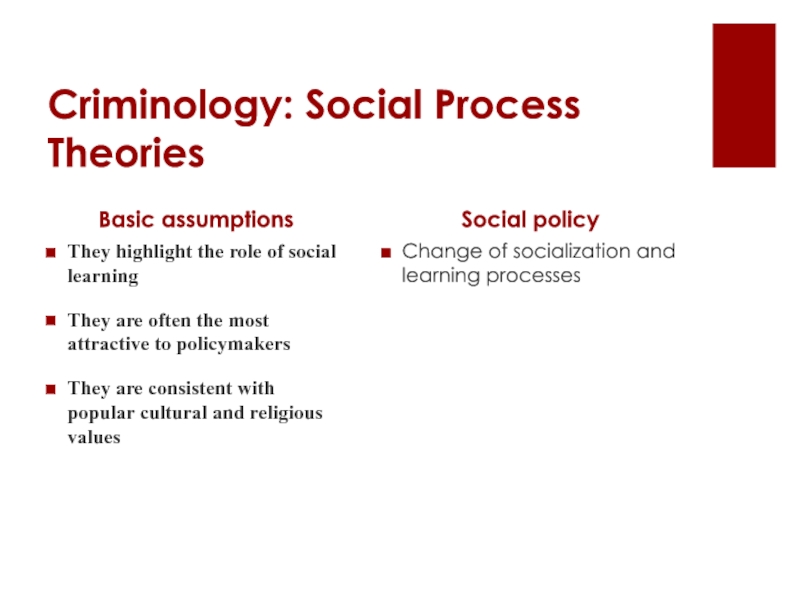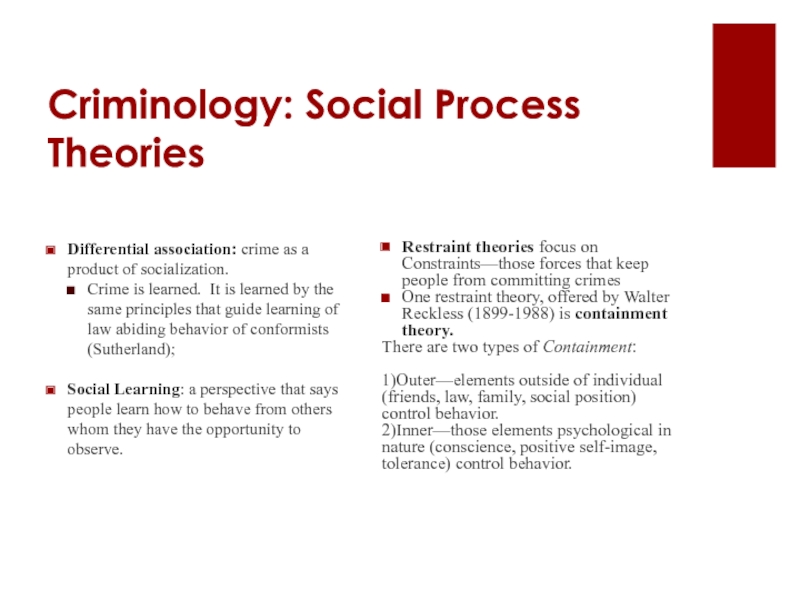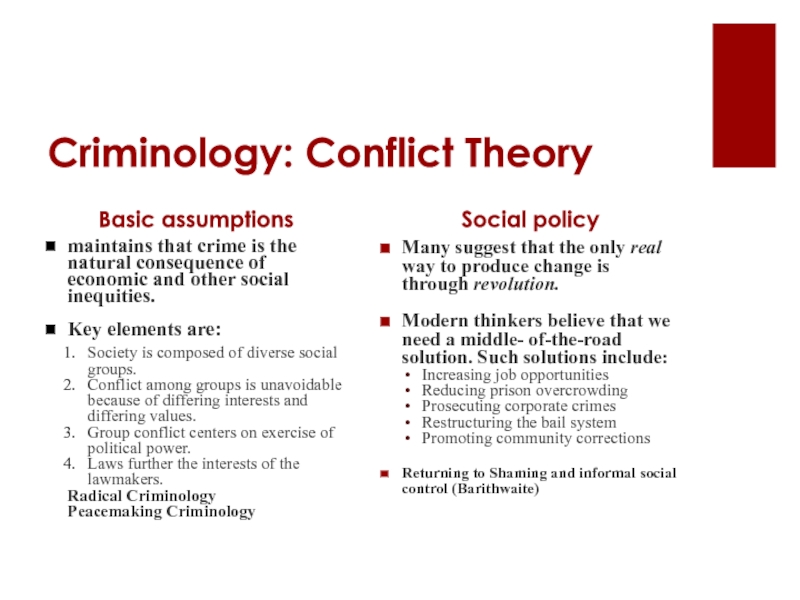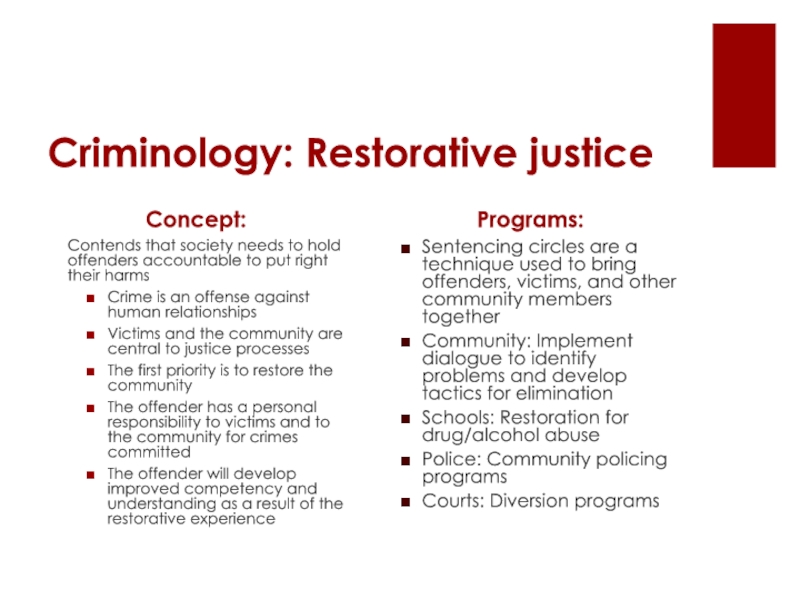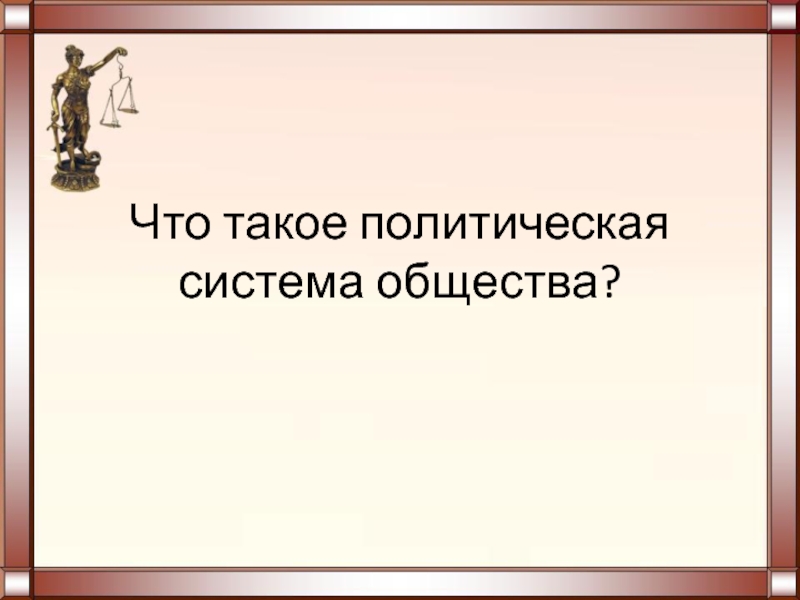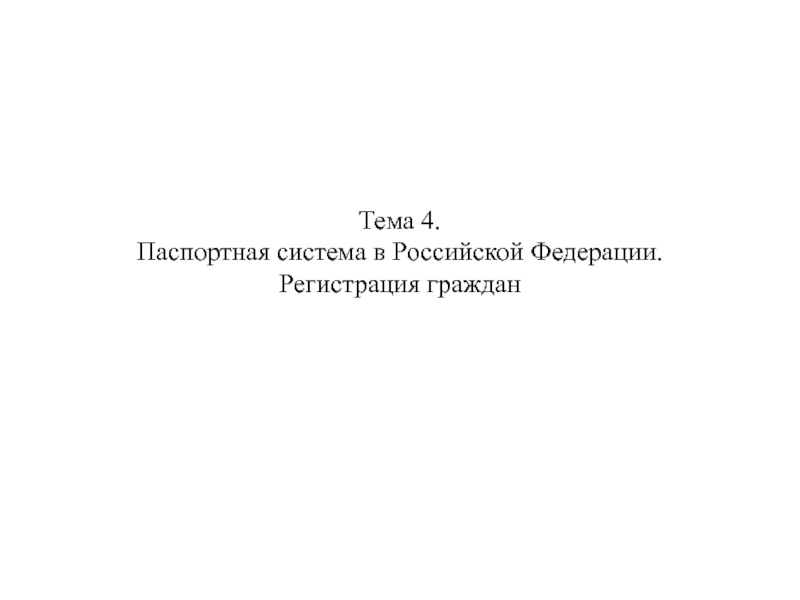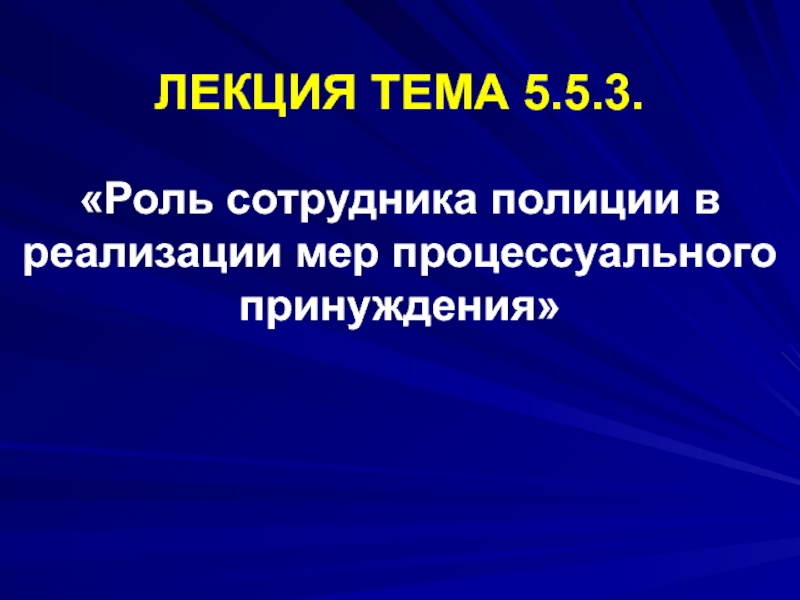- Главная
- Разное
- Дизайн
- Бизнес и предпринимательство
- Аналитика
- Образование
- Развлечения
- Красота и здоровье
- Финансы
- Государство
- Путешествия
- Спорт
- Недвижимость
- Армия
- Графика
- Культурология
- Еда и кулинария
- Лингвистика
- Английский язык
- Астрономия
- Алгебра
- Биология
- География
- Детские презентации
- Информатика
- История
- Литература
- Маркетинг
- Математика
- Медицина
- Менеджмент
- Музыка
- МХК
- Немецкий язык
- ОБЖ
- Обществознание
- Окружающий мир
- Педагогика
- Русский язык
- Технология
- Физика
- Философия
- Химия
- Шаблоны, картинки для презентаций
- Экология
- Экономика
- Юриспруденция
Crime, Violence and Criminal Justice презентация
Содержание
- 1. Crime, Violence and Criminal Justice
- 2. What is crime? Legalistic perspective: Human conduct
- 3. Causes of Crime Why does a person
- 4. What should be criminal? Consensus perspective Laws
- 5. Categories of Theory Explanations of criminal behavior
- 6. Criminology: Classical and Neoclassical Theories
- 7. Criminology: The Neoclassical Perspective Rational choice theory
- 8. Criminology: Biological Theories Basic Assumptions: Gall, Lobroso
- 9. Criminology: Psychobiological Theories Basic assumptions Focus is
- 10. Criminology: Psychological Theories Basic assumptions: Pavlov, Freud
- 11. Criminology: Sociological Theories Basic assumptions Particular sociological
- 12. Criminology: Sociological Theories – Social Ecology Basic
- 13. Criminology: Sociological Theories – Other theories Anomie
- 14. Criminology: Social Process Theories Basic assumptions They
- 15. Criminology: Social Process Theories Differential association:
- 16. Criminology: Social Process Theories Social control Travis
- 17. Criminology: Conflict Theory Basic assumptions maintains that
- 18. Criminology: Restorative justice Concept: Contends that society
Слайд 2What is crime?
Legalistic perspective: Human conduct in violation of the criminal
Political perspective:
Crime is the result of criteria that have been built into the law by powerful groups, which are then used to label selected undesirable forms of behaviour as illegal
Sociology aees crime as an anti-social act of such a nature that its repression is necessary to the preservation of the existing system of society
Psychological perspective:
Crime is problem behavior that contravenes the criminal law and results in difficulties in living within a framework of generally accepted social arrangements
Слайд 3Causes of Crime
Why does a person commit a crime?
What causes crime
Are people basically good?
Why are some people violent and aggressive?
Are people motivated only by self-interest?
Слайд 4What should be criminal?
Consensus perspective
Laws should be enacted to criminalize certain
Pluralist perspective
Behaviors are typically criminalized through a political process only after debate over the appropriate course of action
Слайд 5Categories of Theory
Explanations of criminal behavior fall into eight general categories.
Classical
Biological
Psychobiological
Psychological
Sociological
Social
Conflict
Emergent
Interdisciplinary theories, or integrated theories, could possibly be a ninth category.
Слайд 6Criminology: Classical and Neoclassical Theories
Basic assumptions: Beccaria, Bentham
Crime is caused by
Pain and pleasure are the two central determinants of human behavior.
Punishment is sometimes required to deter law violators.
Crime prevention is possible through swift and certain punishment, which offsets any gains to be had through criminal behavior.
Social Policy
Classical theories form the basis of many criminal justice programs, predominant in Russia
High crime rates call for punishment to get even and to prevent future crime.
Слайд 7Criminology: The Neoclassical Perspective
Rational choice theory
Criminality is the result of conscious
Individuals commit crime when the benefits outweigh the costs.
Routine activities theory
Lifestyles contribute to the volume and type of crime found in society.
Crime is likely to occur when a motivated offender and a suitable target come together in absence of a capable guardian.
Слайд 8Criminology: Biological Theories
Basic Assumptions: Gall, Lobroso
Human behavior is constitutionally or
Basic determinants of human behavior may be passed from generation to generation.
Some behavior is the result of propensities inherited from more primitive developmental stages in the evolutionary process.
Social Policy
Policies based on biological theories are usually considered “extreme.”
For example:
Eugenics movement of the 1920s;
Castration of pedophiles
Слайд 9Criminology: Psychobiological Theories
Basic assumptions
Focus is on the relationship of the following
DNA
environmental contaminants
nutrition
hormones
physical trauma
body chemistry in human cognition and behavior
Chromosome Theory (Jacobs)
Biocriminology
Heredity
Social Policy
Policies look to modify body chemistry to change behavior.
Example: Medication
Слайд 10Criminology: Psychological Theories
Basic assumptions: Pavlov, Freud
The individual is the main unit
Personality is the major motivational element.
Crimes result from inappropriately conditioned behavior.
Abnormal mental processes may have a number of causes.
Diseased mind
Inappropriate learning
Improper conditioning
Psycopathology
Social policy
Policies are primarily individualistic and oriented toward individualized treatment and therapy plans designed to reduce a person’s dangerousness
Слайд 11Criminology: Sociological Theories
Basic assumptions
Particular sociological theories may give greater or lesser
The clash of norms and values among variously socialized groups
Socialization and the process of association between individuals
The existence of subcultures and varying types of opportunities
Social policy
Social programs are instituted to change cultural conditions and societal arrangements that lead people into crime
Слайд 12Criminology: Sociological Theories – Social Ecology
Basic assumptions:
In the 1920s, Park and
Concentric zones are likened to a bull’s eye with the center of the city being the target.
Shaw and McKay related this theory to crime.
Crime increased as one moved towards center of the city, with the highest crime rates in the “zone of transition,” where there was a lot of poverty, illiteracy, lack of schooling, unemployment, and illegitimacy (social disorganization).
Social disorganization leads to crime.
Social policy
Crime Prevention Through Environmental Design(CPTED):
Natural surveillance
Natural access control
Natural territorial reinforcement
Слайд 13Criminology: Sociological Theories – Other theories
Anomie Theory
Emile Durkheim (1858–1917) introduced the
Robert K. Merton (1910–2003) defined anomie as a disjuncture between societal goals and legitimate means. He developed a typology of adaptations:
Conformist—
\accepts goals and means (law abiding)\
Innovator—
accepts goals, rejects means (
property/white-collar offenses)
Retreatest—
rejects both goals and means
(addiction/victimless crimes)
Ritualist—
rejects g
oals, accepts means (repetitive/mundane lifestyle)
Rebel—rejects g
oals and means an
d substitutes his own goals and means (political crime)
Subcultural theory
Cohen (b. 1918)—reaction formation, lower class youth’s rejection of middle class values, leads to the development of gangs and reinforces the subculture.
Miller—Lower class priority concerns of trouble, toughness, excitement, smartness, fate, and autonomy lead to crime.
Cowards and Ohlin proposed that an illegitimate opportunity structure allows delinquent youths to achieve success outside of legitimate ways.
Wolfgang and Ferracuti coined the term “subculture of violence” after examining homicide rates in Philadelphia in the 1950s.
Here, violence is a traditional, and often accepted, method of dispute resolution.
Слайд 14Criminology: Social Process Theories
Basic assumptions
They highlight the role of social learning
They
They are consistent with popular cultural and religious values
Social policy
Change of socialization and learning processes
Слайд 15Criminology: Social Process Theories
Differential association: crime as a product of socialization.
Crime is learned. It is learned by the same principles that guide learning of law abiding behavior of conformists (Sutherland);
Social Learning: a perspective that says people learn how to behave from others whom they have the opportunity to observe.
Restraint theories focus on Constraints—those forces that keep people from committing crimes
One restraint theory, offered by Walter Reckless (1899-1988) is containment theory.
There are two types of Containment:
1)Outer—elements outside of individual (friends, law, family, social position) control behavior.
2)Inner—those elements psychological in nature (conscience, positive self-image, tolerance) control behavior.
Слайд 16Criminology: Social Process Theories
Social control
Travis Hirschi emphasized the bond between individuals
Elements of the social bond include:
Attachment (to others)
Commitment (to appropriate lifestyles)
Involvement (in conventional values)
Belief (in correctness of rules of society)
Life course
Social development theories represent an integrated view of human development that points to the process of interaction among and between individuals and society as the root cause of criminal behavior.
An example, put forth in 1993 by Sampson and Laub, is the life course perspective.
Crime is linked to turning points in one’s life.
Turning points are transitional periods during which one can either walk toward or away from crime.
Слайд 17Criminology: Conflict Theory
Basic assumptions
maintains that crime is the natural consequence of
Key elements are:
Society is composed of diverse social groups.
Conflict among groups is unavoidable because of differing interests and differing values.
Group conflict centers on exercise of political power.
Laws further the interests of the lawmakers.
Radical Criminology
Peacemaking Criminology
Social policy
Many suggest that the only real way to produce change is through revolution.
Modern thinkers believe that we need a middle- of-the-road solution. Such solutions include:
Increasing job opportunities
Reducing prison overcrowding
Prosecuting corporate crimes
Restructuring the bail system
Promoting community corrections
Returning to Shaming and informal social control (Barithwaite)
Слайд 18Criminology: Restorative justice
Concept:
Contends that society needs to hold offenders accountable to
Crime is an offense against human relationships
Victims and the community are central to justice processes
The first priority is to restore the community
The offender has a personal responsibility to victims and to the community for crimes committed
The offender will develop improved competency and understanding as a result of the restorative experience
Programs:
Sentencing circles are a technique used to bring offenders, victims, and other community members together
Community: Implement dialogue to identify problems and develop tactics for elimination
Schools: Restoration for drug/alcohol abuse
Police: Community policing programs
Courts: Diversion programs
